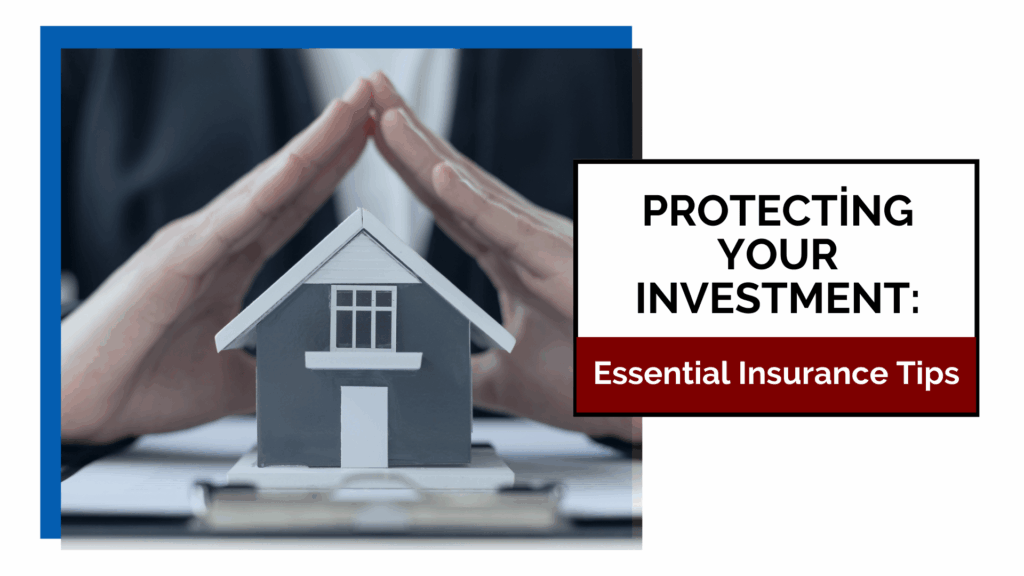
Are you thinking about the insurance protection on your rental property, and whether it’s enough?
Risk and liability are on the minds of all real estate investors in San Mateo, and the insurance crisis in California has only contributed to the unease that so many owners are feeling.
We don’t want to worry too much about what could go wrong, but we do want to be protected against any potential worst-case-scenario. So, let’s take a look at some essential insurance tips that can protect your San Mateo investment property.
Quick Look:
|
California’s Insurance Crisis: What Landlords Need to Know
You may have noticed that property insurance has become complicated.
In recent years, California has experienced an insurance crisis fueled by wildfire losses, climate change risks, and regulatory challenges. Several major insurers have scaled back or stopped writing new homeowner and landlord policies in parts of the state. For property owners, this has translated into higher costs, more non-renewals, and fewer available options.
For landlords in San Mateo, the crisis may feel less visible than in areas with high wildfire risk, but ripple effects are real: higher premiums, stricter requirements for property maintenance, and in some cases, reliance on the California FAIR Plan, the state’s insurer of last resort. Being proactive means reviewing coverage annually, investing in risk mitigation, and working with knowledgeable brokers. This is the best way to navigate this evolving environment.
What Standard Landlord Insurance Covers
A standard landlord or “dwelling” policy is designed for rental properties where the owner does not live at the property. It differs from a typical homeowner policy in important ways:
- Dwelling Coverage. A dwelling policy, or landlord insurance, protects the structure itself; walls, roof, flooring, and built-in appliances, against common perils like fire, wind, theft, or vandalism. If you file a claim after a covered event, you’ll be able to repair or replace whatever was damaged.
- Other Structures. Most plans will offer coverage for structures such as detached garages, sheds, or fences on the property.
- Loss of Rental Income. Make sure your landlord policy includes loss of rent coverage. This reimburses you for any lost rent if the property becomes uninhabitable due to a covered loss, ensuring you don’t lose cash flow while repairs are made.
- Liability Protection. You do not want to be without liability coverage when you’re renting out a home. This provides coverage if someone is injured on your property and you’re found legally responsible, including legal defense costs.
- Medical Payments. Coverage for small medical expenses might pop up after injuries to guests, regardless of fault.
- Limited Personal Property. Protects items you own inside the rental, such as appliances or furnishings provided for tenants.
Understanding the details of these coverages is critical. Pay close attention to exclusions, deductibles, and limits to avoid surprises during a claim. One of the most important things to point out is that there is no protection for a tenant’s personal belongings. This makes a strong case for renter’s insurance.
Optional — But Important — Coverages for San Mateo Landlords
When you have a mortgage, your lender will always require a certain level of insurance. There are also different coverage types that are not required legally or by any lenders, but they are still worth consideration, especially if you’re worried about earthquakes and floods.
- Earthquake Insurance
Standard policies exclude earthquake damage, which is a major concern in the Bay Area. San Mateo lies in a seismically active region, and landlords should strongly consider earthquake coverage. Policies are usually sold through the California Earthquake Authority and can help pay for structural repairs, personal property damage, and loss of rental income. Deductibles are typically high, but the protection against catastrophic loss is invaluable.
- Flood Insurance
Floods are also excluded from most landlord policies. While San Mateo is not uniformly flood-prone, areas near creeks, storm drains, or the Bay are at risk, especially as sea-level rise intensifies. The National Flood Insurance Program (NFIP) offers policies for both structure and contents, and private carriers sometimes provide broader coverage. Even if your property isn’t in a mapped flood zone, consider this coverage if you want peace of mind.
- Umbrella Liability Insurance
Umbrella policies extend liability protection beyond the limits of your landlord policy. This is especially important for property owners with multiple units or significant personal assets to protect. A single lawsuit could exceed the standard liability limits, and an umbrella policy can add an extra $1 million or more in protection across all your properties.
- Loss of Rents / Business Income Riders
While many landlord policies include some loss-of-rents coverage, you’ll want to confirm the details. Does it cover the full amount of your rental income? For how long? Adding or expanding this endorsement ensures your investment income continues during extended repair periods.
- Ordinance or Law Coverage
If your San Mateo rental is an older property, rebuilding after a loss could trigger costly code upgrades, such as seismic retrofits or accessibility compliance. Ordinance or law coverage pays for these additional costs so you’re not left covering them out of pocket.
- Water Backup and Equipment Breakdown
Sewer backups, sump pump overflows, or sudden equipment breakdowns (like HVAC or boiler failure) are common but often excluded from standard policies. Endorsements for water backup and equipment breakdown can be relatively affordable and provide valuable protection.
Strategies for Navigating the Market and Managing Costs
- Work with a Knowledgeable Broker
Given the volatility in California’s insurance market, working with a broker who specializes in landlord or investment property coverage is crucial. They can shop multiple carriers, identify gaps, and help you understand policy fine print.
- Invest in Risk Mitigation
Insurers reward landlords who reduce risk. Install smoke and carbon monoxide detectors, modernize electrical systems, and add water shutoff devices. For earthquake risk, consider retrofitting older buildings. For properties in flood zones, elevate utilities or add drainage improvements. Document these upgrades for insurers to secure better rates.
- Require Renter’s Insurance
Making renter’s insurance mandatory shifts responsibility for tenant belongings and some liability away from you. Require proof of coverage at lease signing and keep updated copies on file.
- Structure Ownership Wisely
Consider holding rental properties in an LLC or other entity to separate personal and business liability. While this isn’t a substitute for insurance, combining strong coverage with proper entity structuring can offer an extra layer of protection.
- Understand the FAIR Plan
If your property is declined by private insurers, the California FAIR Plan may provide basic fire coverage. However, it’s limited and should be paired with a difference-in-conditions policy to cover additional perils. Use this option only when necessary, and continue seeking private coverage.
- Review Deductibles and Coverage Options Annually
Policies vary in whether they pay claims based on replacement cost or actual cash value. Earthquake and flood deductibles can be significant. Review your coverage annually to make sure it still aligns with your financial goals and risk tolerance.
- Maintain a Post-Loss Plan
Keep digital photos, receipts, and unit condition reports for every property. In the event of a loss, this documentation will make claims easier to process and help you recover rental income faster.
San Mateo’s location on the Peninsula means landlords face a unique collection of risks.
Proximity to the Bay raises flood and sea-level rise concerns, while earthquake risk is ever-present due to nearby fault lines. Many properties are older, increasing the likelihood of code upgrade requirements after a loss. Landlords who address these vulnerabilities head-on, by investing in retrofits, securing flood insurance, and carrying adequate liability protection, will be better prepared for long-term stability.
Here’s Our Practical Checklist for San Mateo Landlords
- Review your existing landlord policy for limits and exclusions.
- Confirm you have adequate liability coverage; consider umbrella protection.
- Evaluate earthquake and flood insurance options.
- Ensure your policy includes robust loss-of-rents coverage.
- Add endorsements for ordinance or law, water backup, and equipment breakdown if applicable.
- Require renter’s insurance for all tenants.
- Invest in property improvements that reduce risk and make your property more insurable.
- Keep an updated inventory and claims response plan.
 Insurance is one of the most critical tools for San Mateo rental property owners interested in protecting both income and equity. California’s insurance market is challenging, and landlords cannot afford to take a passive approach.
Insurance is one of the most critical tools for San Mateo rental property owners interested in protecting both income and equity. California’s insurance market is challenging, and landlords cannot afford to take a passive approach.
By understanding what’s included in a standard landlord policy, supplementing it with optional protections like earthquake, flood, and umbrella insurance, and taking proactive steps to reduce risk, you can position your properties for long-term resilience.
We engage in thoughtful planning with all of the owners who partner with us. Contact our team at Sharevest Property Management, and we’ll make sure your property is protected and your investment is in good shape for the long term.